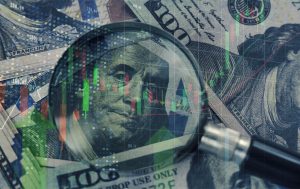The Japanese yen remained near a 38-year low on Thursday, struggling to stay above 160 per dollar, as market participants closely monitored potential intervention from Japanese authorities to stabilize the currency.
Market Overview
In the broader market, the U.S. dollar pared some of its gains from the previous session as U.S. Treasury yields eased slightly. However, the greenback held near an eight-week high against a basket of currencies.
The yen rose 0.3% to 160.33 per dollar in the Asian session, recovering some of its losses after hitting a low of 160.88 on Wednesday, its weakest level since 1986. The Japanese currency has depreciated by approximately 2% this month and 12% this year against the resilient dollar. The stark interest rate differentials between the U.S. and Japan have made the yen attractive for carry trades, where investors borrow in a low-interest-rate currency and invest in higher-yielding assets.
Intervention Concerns
The yen’s decline past the critical 160 per dollar level has heightened concerns among traders about possible intervention from Tokyo. Earlier this year, Japanese authorities spent 9.79 trillion yen ($60.94 billion) to strengthen the yen by 5% from its 34-year low of 160.245.
Analysts suggest that while the risk of intervention has increased, Japanese authorities might be waiting for the U.S. personal consumption expenditures (PCE) price index release on Friday before taking action. Both the level of the exchange rate and the pace of the depreciation are important for the Ministry of Finance (MoF) to consider intervening in FX markets. However, subdued volatility in options markets indicates that the recent depreciation may not yet meet all criteria for intervention.
Dollar Strength
Sterling edged away from a one-month low of $1.2616, rising 0.13% to $1.2638, while the euro advanced 0.11% to $1.0693. Nonetheless, the euro is set to lose around 1.4% for the month, pressured by political turmoil in the eurozone ahead of France’s snap election this weekend. The dollar index dipped 0.1% to 105.92, close to a two-month high of 106.13 reached in the previous session, driven by rising U.S. Treasury yields.
Australian and New Zealand Dollars
An upside surprise in Australian inflation on Wednesday caught traders off-guard, leading markets to increase the likelihood of another interest rate hike this year, which sent domestic yields higher. The Australian dollar rose 0.23% to $0.6663, while the New Zealand dollar ticked up 0.07% to $0.6088.
Awaiting U.S. Core PCE Data
Currency movements outside the yen have been relatively subdued this week as traders await Friday’s U.S. core PCE data, the Federal Reserve’s preferred inflation measure, for further insights into the U.S. rate outlook.




